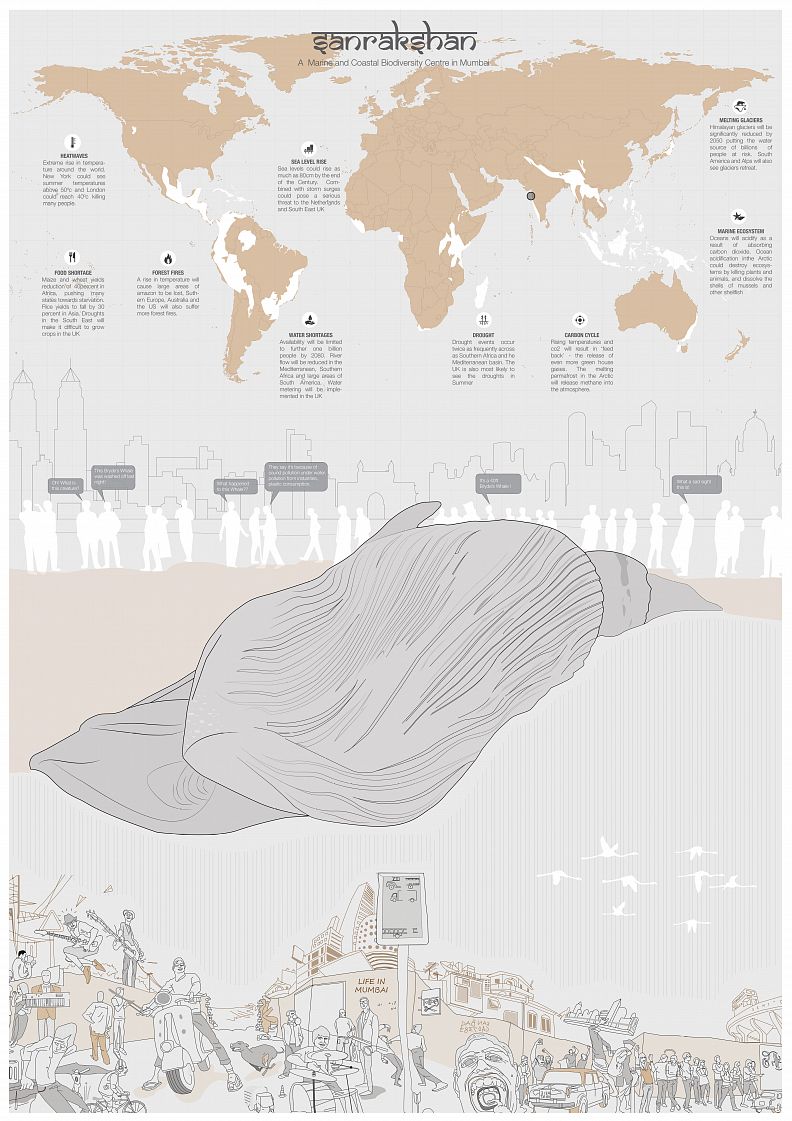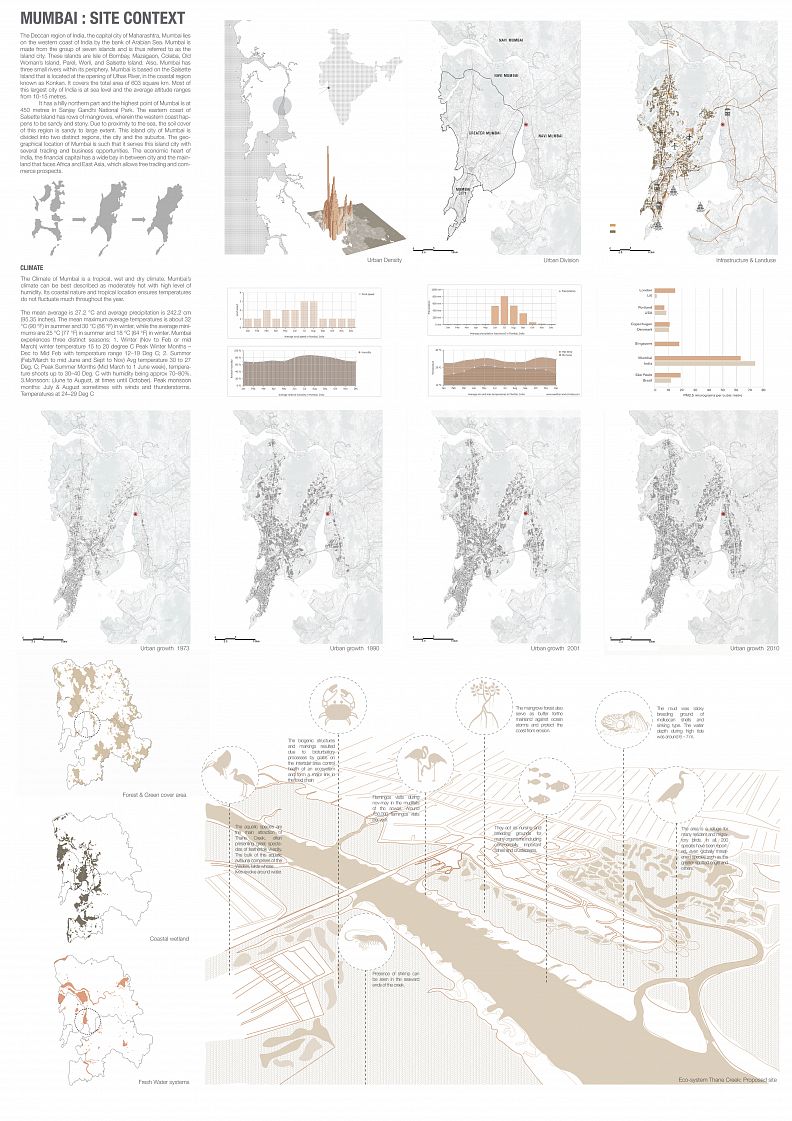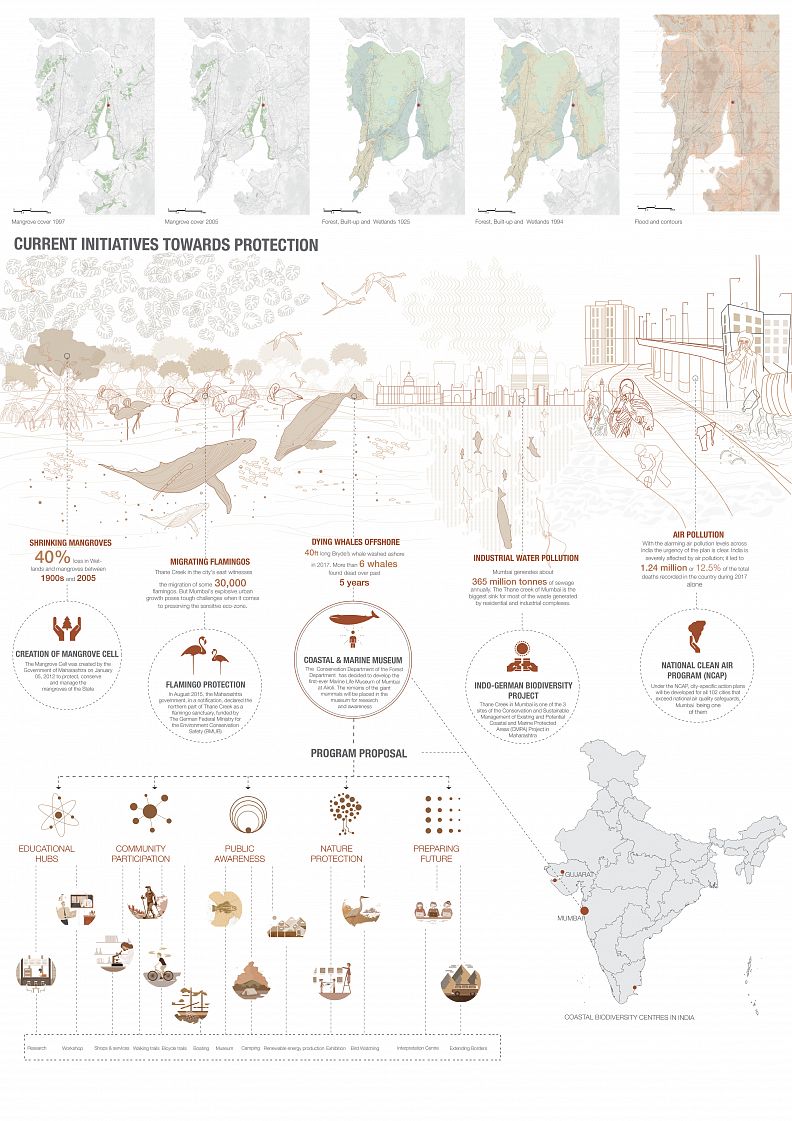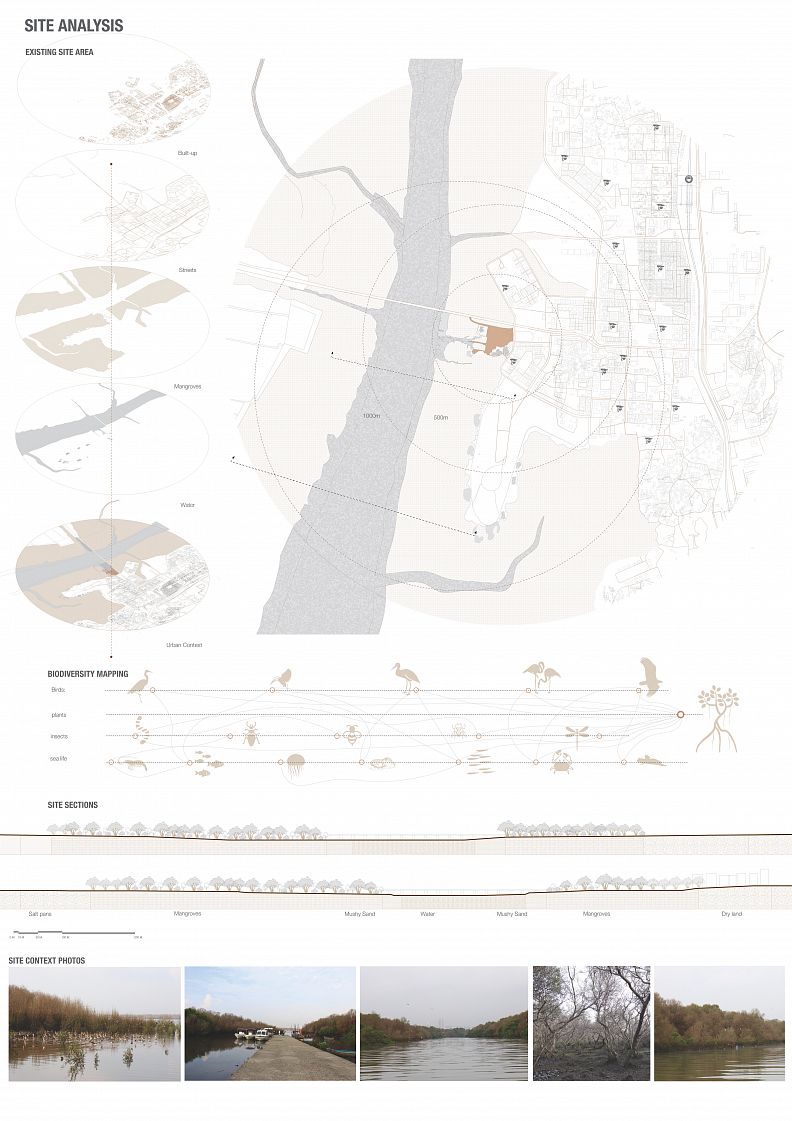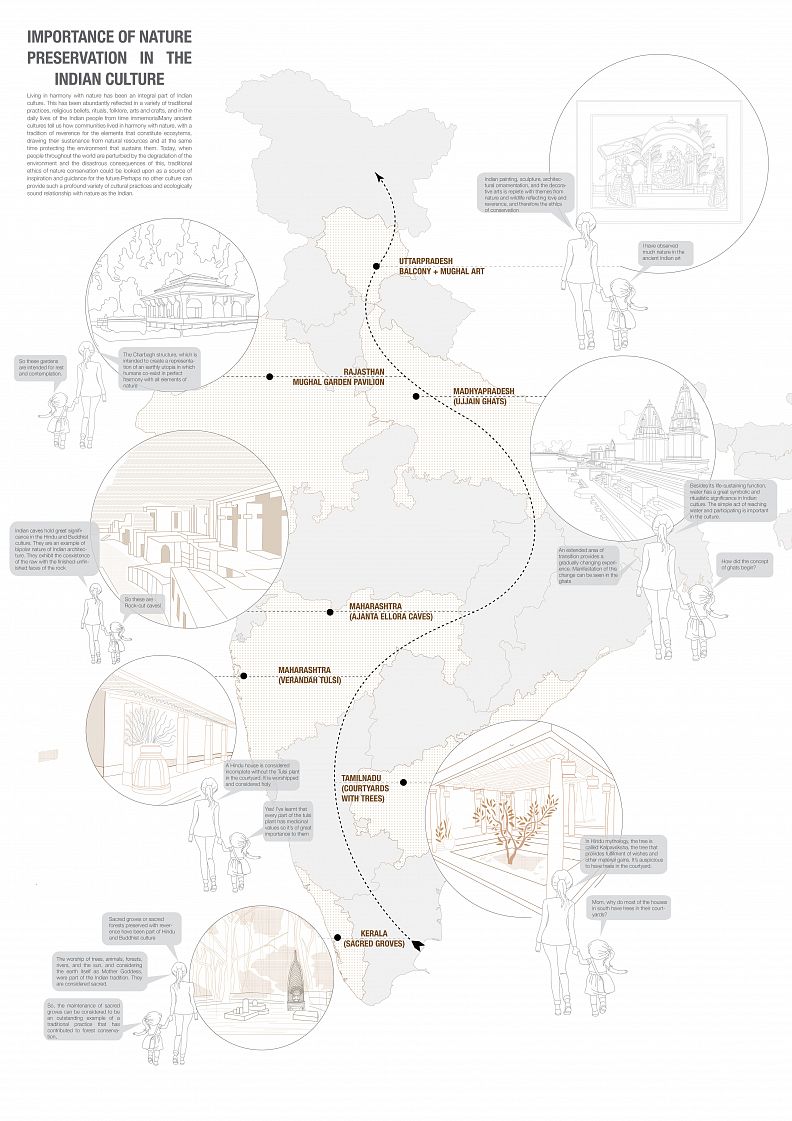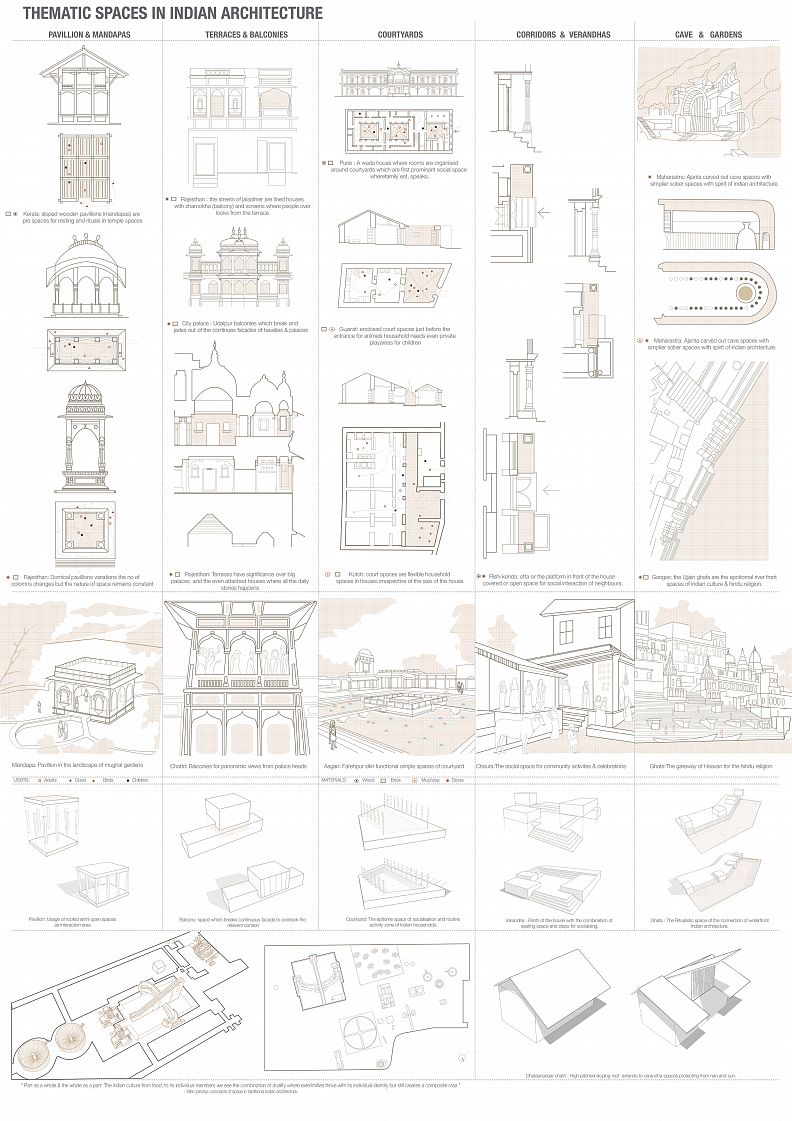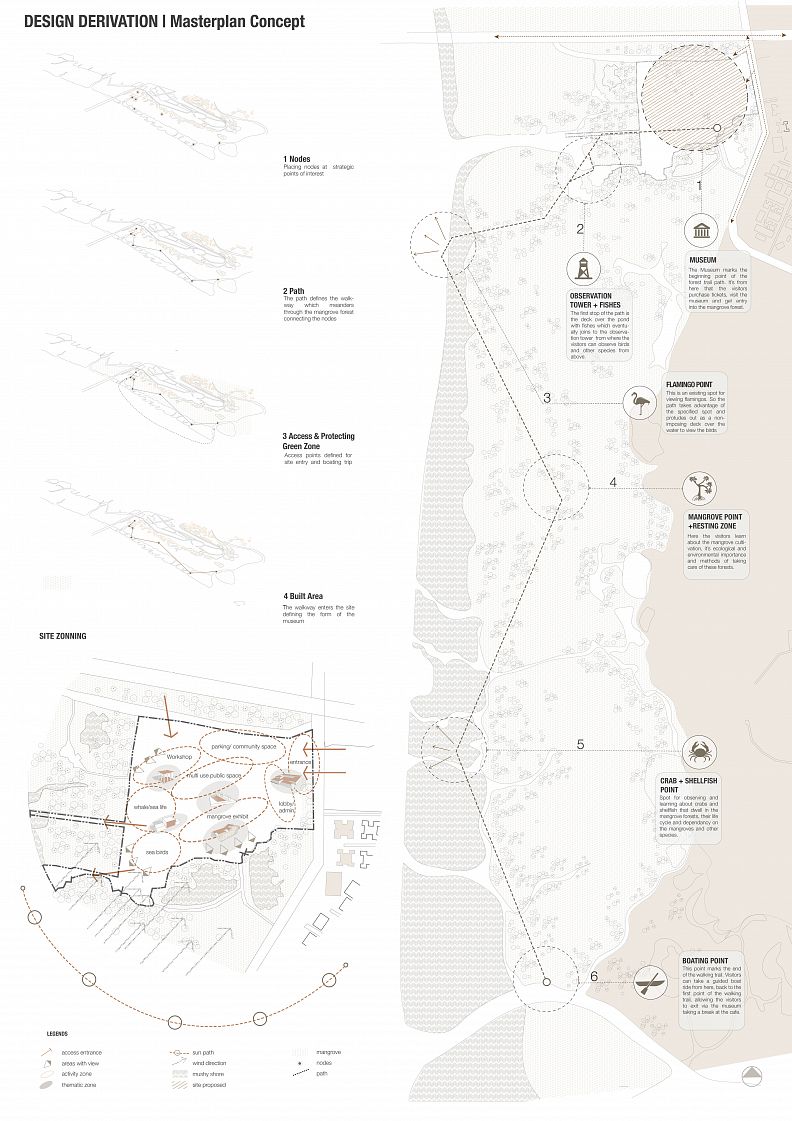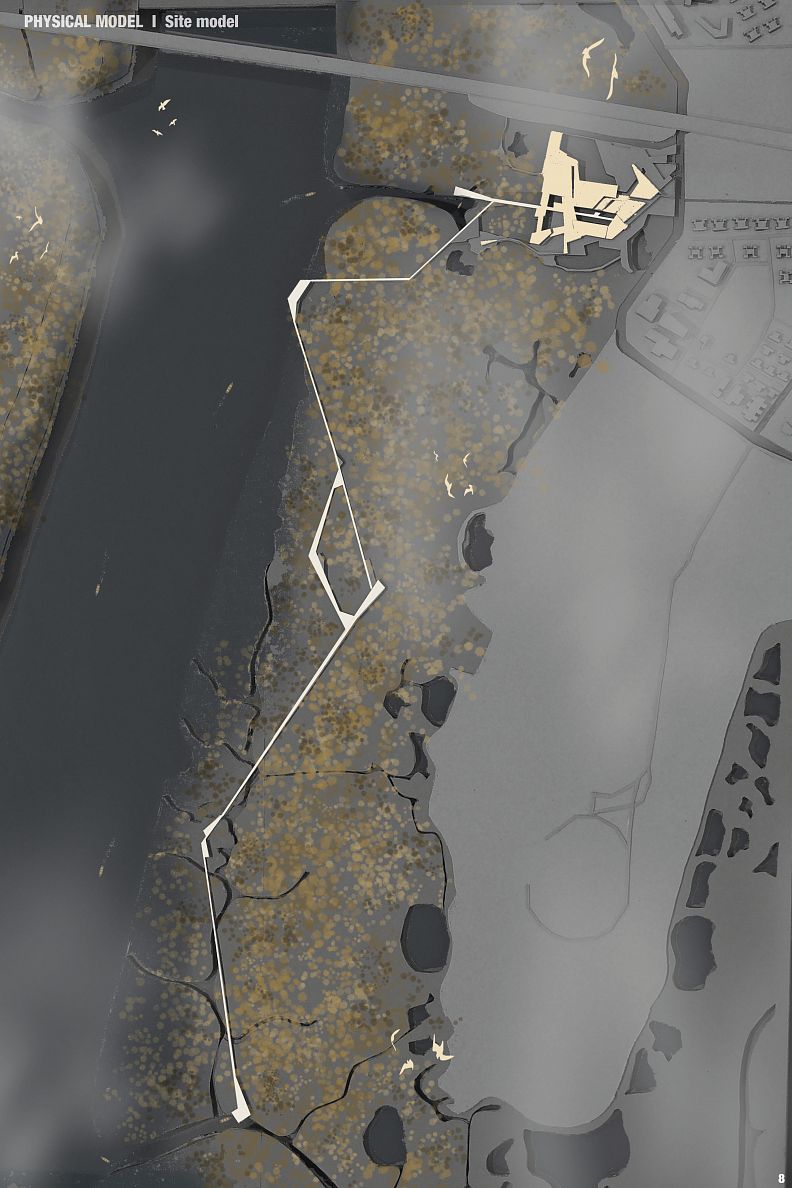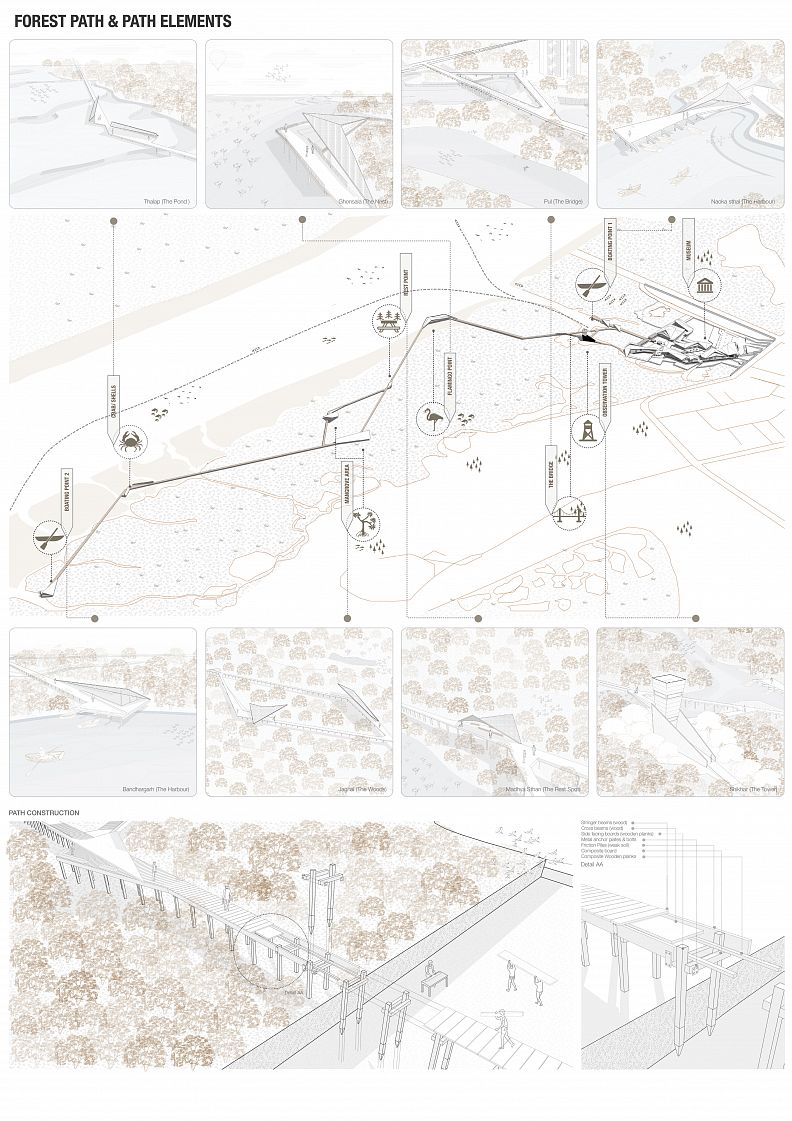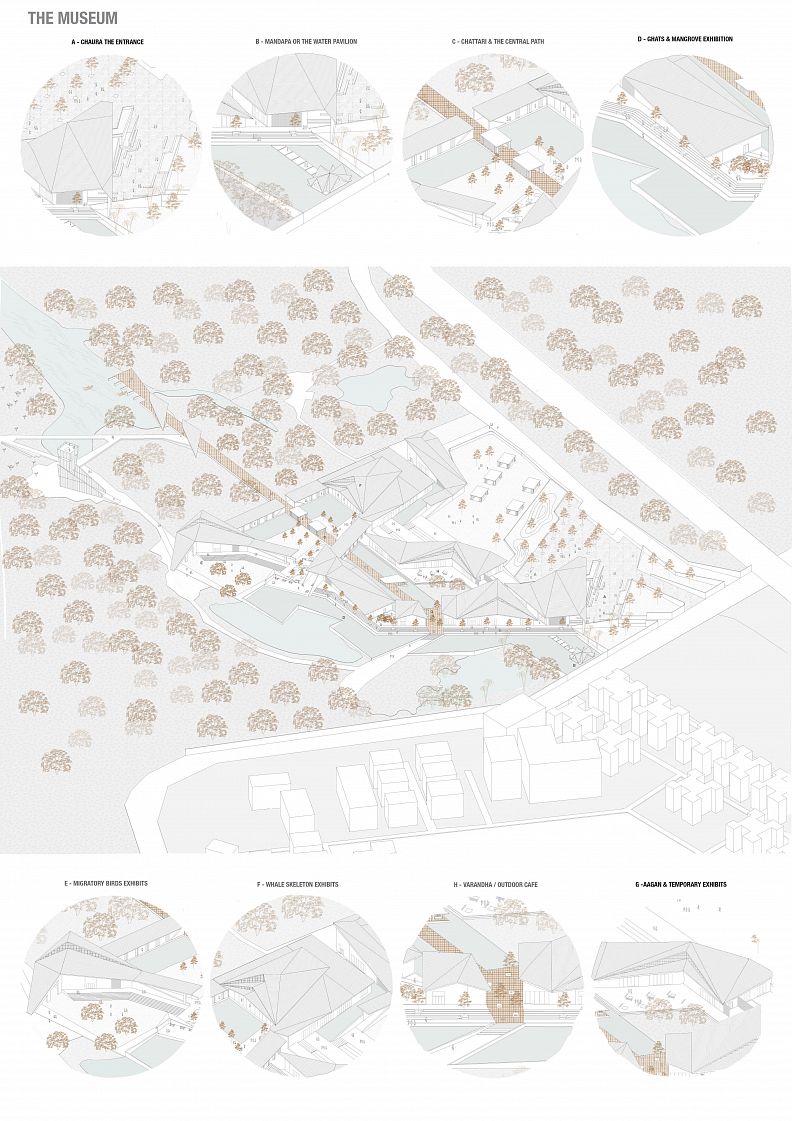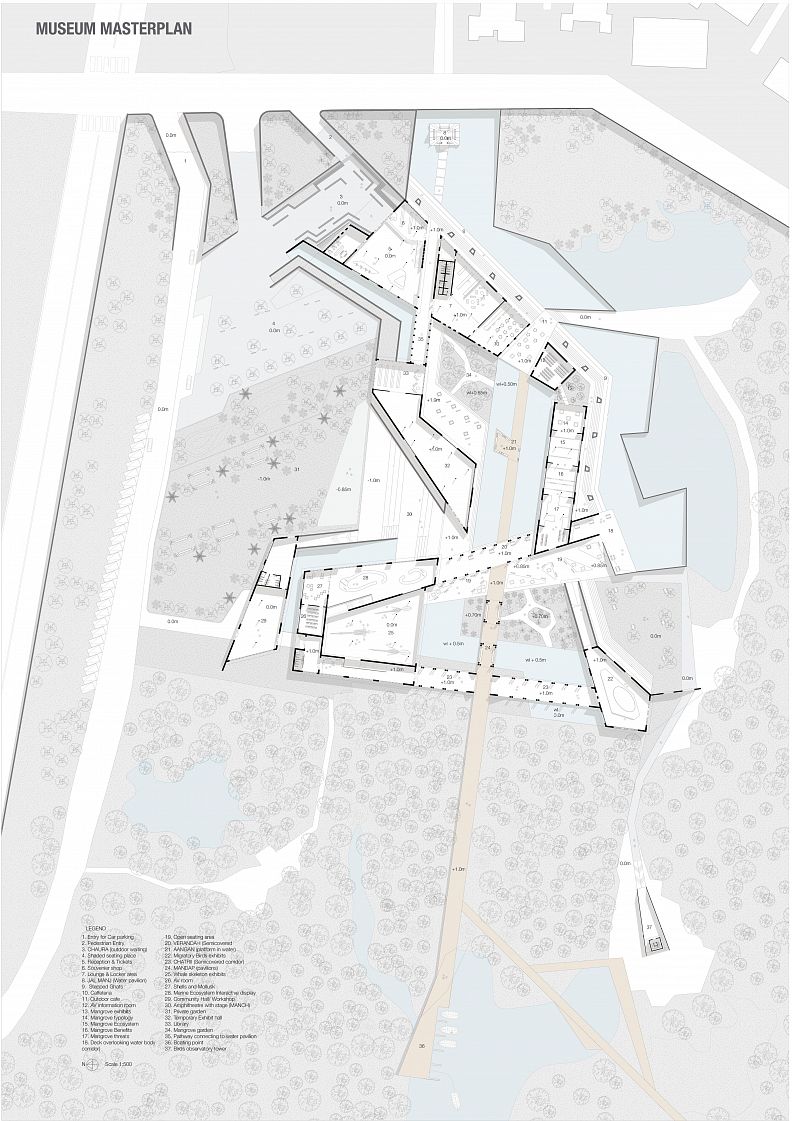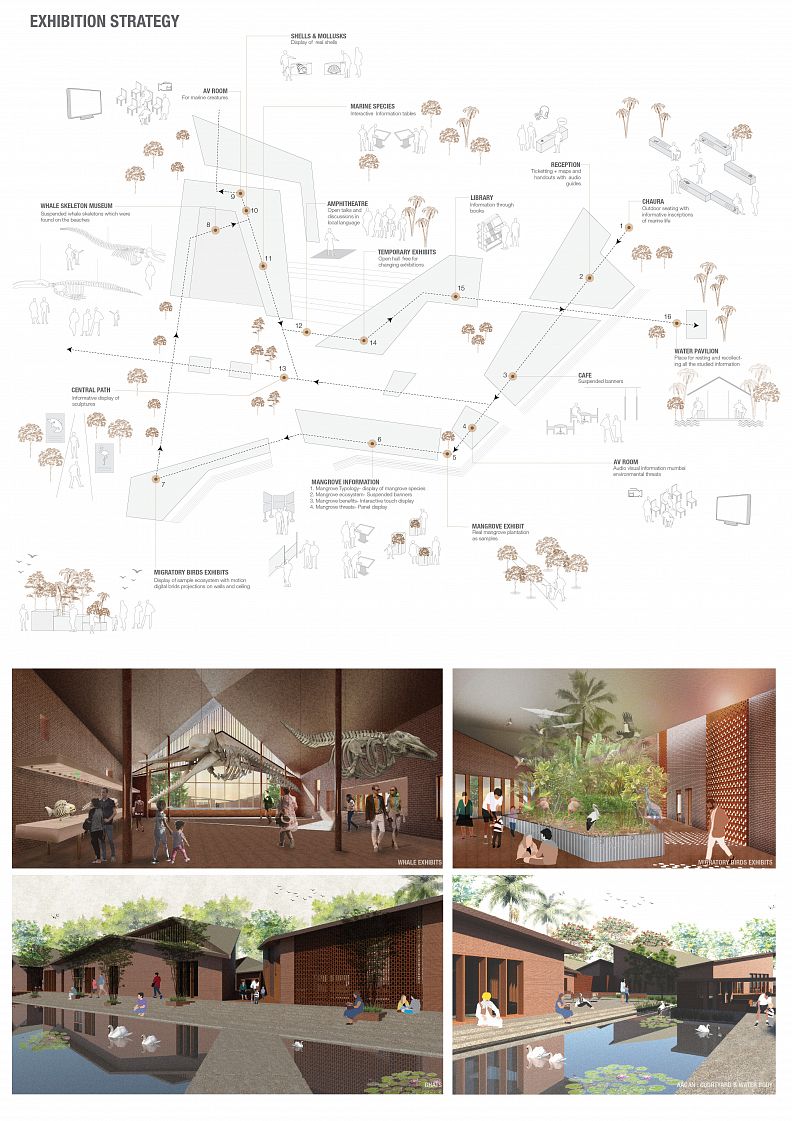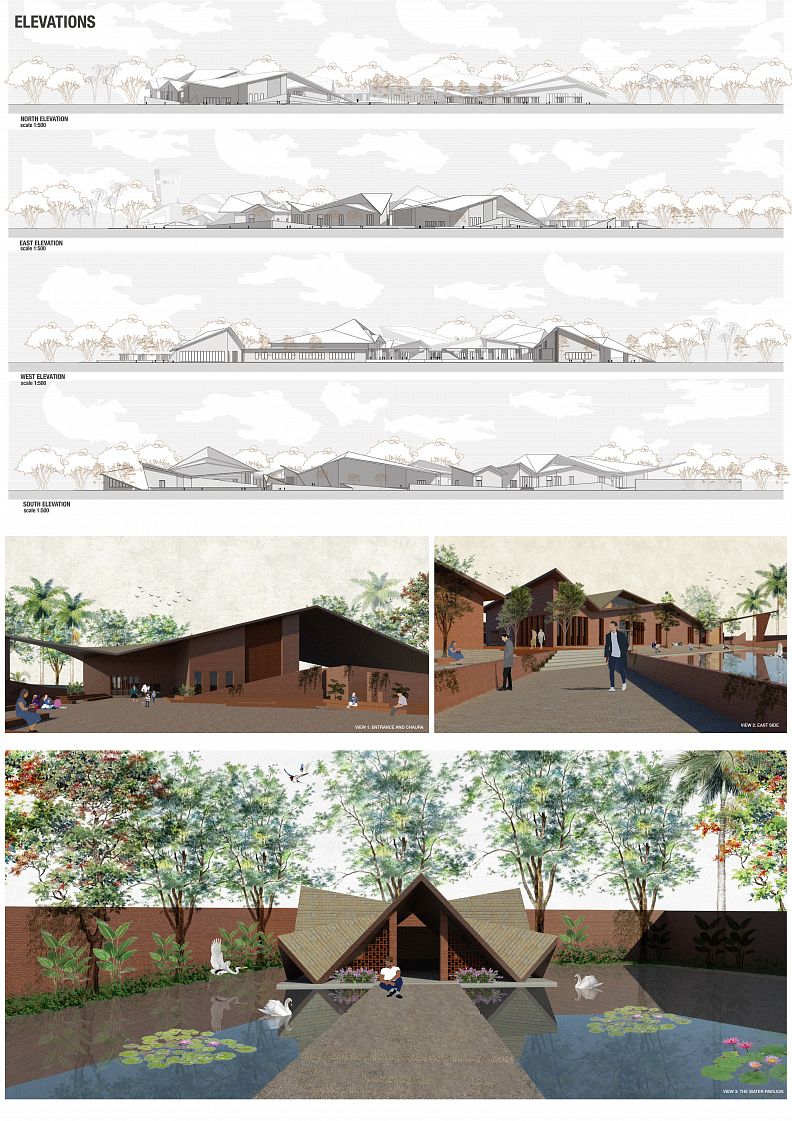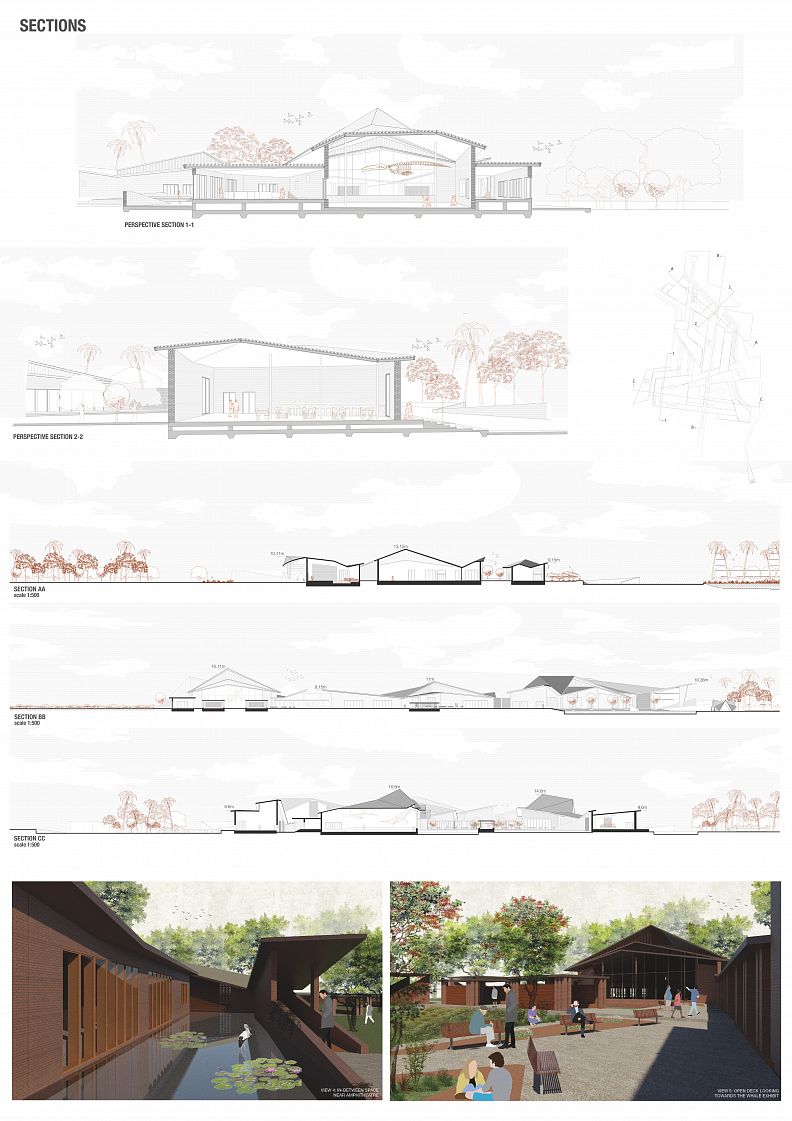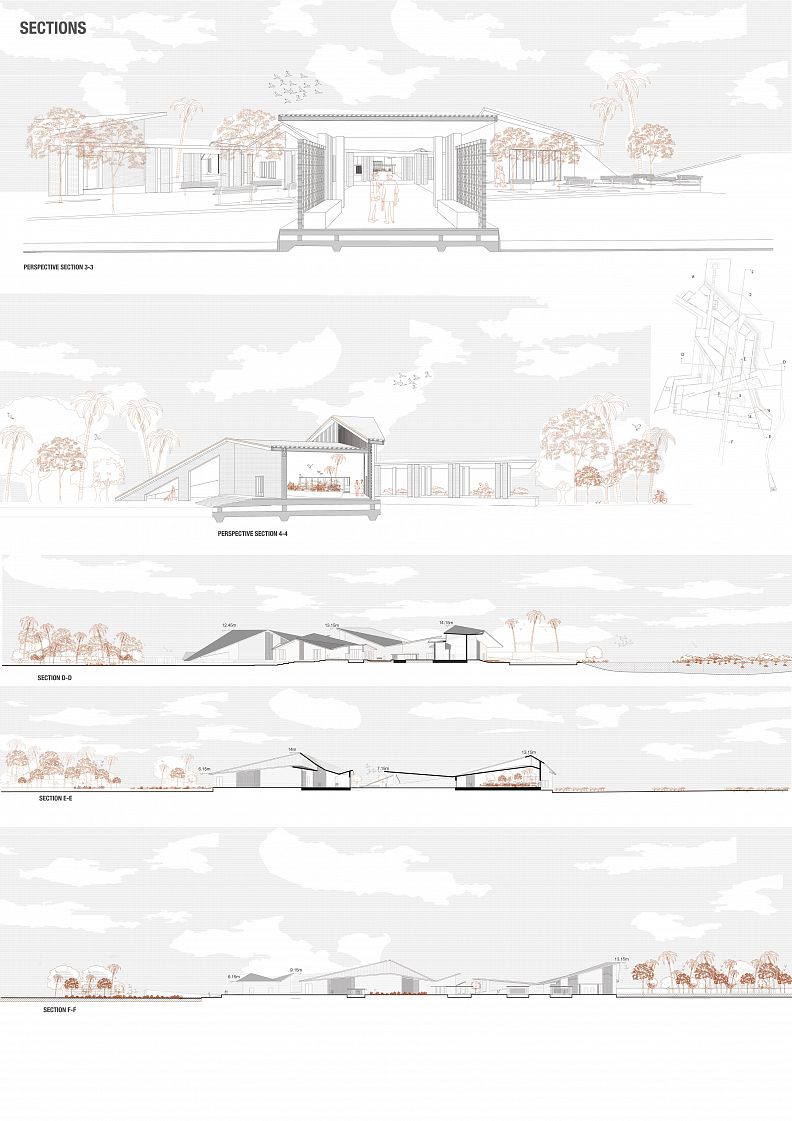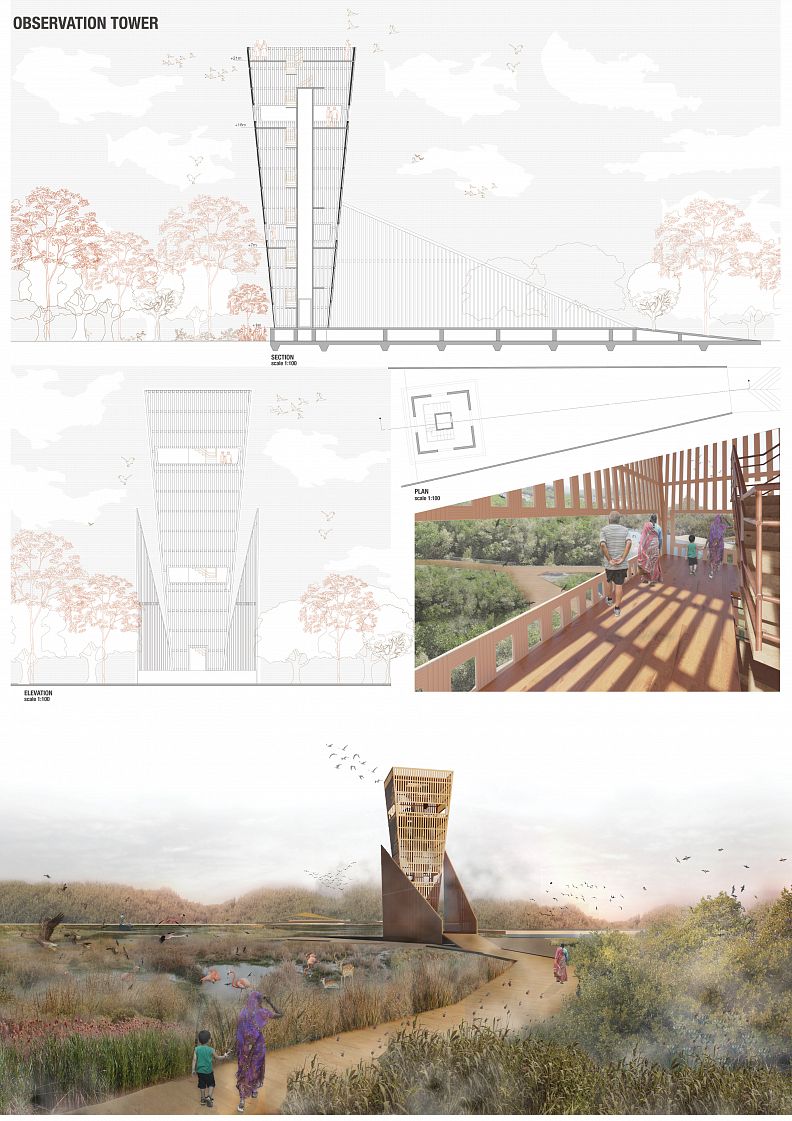SANRAKSHAN : A Marine and Coastal Biodiversity Centre in Mumbai

Idea projektu
The title “Sanrakshan’ which means ‘to protect’ is a pointer towards what the project is aimed at .Sanrakshan (A coastal and marine biodiversity centre) The project aims at being a significant platform for bringing about a change in the current ways of people interacting with the environment and to enhance the perception of environment protection.
From the year 2015- 2018, the city of Mumbai in India, started witnessing a rare sight of endangered Whales beaching at the shores of the sea. These giant marine mammals were found dead on the beaches in different parts of the city shores. During the same years, the city also began to experience series of devastating floods. Mumbai is the capital city of the state of Maharashtra and the financial capital of India. It has a population of about 12.5 million, making it the seventh most populous city in the world. With the ever growing population, the city is faced with multifarious environmental issues like pollution, waste disposal, depleting green belts etc. For a city like Mumbai, if the current ways of interacting with the environment is not checked, the quality of life in this city will be seriously dangerous. The whale beaching and flood incidents that occurred over the few years was a major eyeopener for the State Government of Maharashtra and its citizens as it started to face the adverse effects of rapid urbanisation and destruction of nature. There was an alarming realisation that the effects of flood worsened because of the depleting mangrove belt along the coast of the Mumbai city. The natural mangroves act as flood barriers and help to sustain the ecosystem at the coastlines. The drastic decrease in the mangrove forests cover could be distinctly observed in the past decade. With this rising concern in mind, the State Government started taking steps towards nature protection. With the help of international organisations, the Government has setup pilot projects for raising awareness about environment protection among the citizens and involve them in the projects to make them more participatory. One such proposed project is the Coastal and Marine biodiversity centre at Airoli, Mumbai . The project will be funded by an international agency, Deutsche Gesellschaft fur Internationale Zusammenarbeit (GIZ) and the hope is to greatly influence the citizens by educating them about marine life and guiding them towards effective environmental protection practices.
Popis projektu
Our project is built upon the existing proposal for raising awareness and starts as a museum on the proposed site and extends further to allow the visitors to not only learn about marine ecology, but also about the mangroves which exists as a thick forests belt around the site. Living in harmony with nature has been an integral part of Indian culture. This has been abundantly reflected in a variety of traditional practices, religious beliefs, rituals, folklore, arts and crafts, and in the daily lives of the Indian people from time immemorial. Many ancient cultures tell us how communities lived in harmony with nature, with a tradition of reverence for the elements that constitute ecosystems, drawing their sustenance from natural resources and at the same time protecting the environment that sustains them. Today, when people throughout the world are perturbed by the degradation of the environment and the disastrous consequences of this, traditional ethics of nature conservation could be looked upon as a source of inspiration and guidance for the future. Perhaps no other culture can provide such a profound variety of cultural practices and ecologically sound relationship with nature as the Indian. With this in mind the centre is designed as a complex with different structures/ pavilions inspired by the Indian tradition of pavilions in water. These structures function differently but all remain together and are aligned around a central “sacred’ pathway on water which runs through the site and becomes a strategically planned Mangrove Broadway towards the other end, allowing the people to gain a deeper understanding and sensitivity towards the nature and eventually culminating as a boating point for the visitors. The bona fide skeletal remains of the beached Whales found on the shores of Mumbai will be displayed at this centre to provoke a sense of astonishment and urgency to the visitors. The aim of the design is to provide information and educate people not only through installations and samples inside the centre, but also provide a significant educational experience while in the open wild landscape.
Technické informace
The principal pathway which directs the design of the entire complex (also the visitors movement), consists of 6 major nodes - starting from the Museum itself, then the bird Observation tower, the flamingo point, mangrove point, Crabs/ shellfish points and ending with a boating point deck, each of them having a distinct architectural quality and experience. They are carefully arranged in such a way that keep the natural elements on this ecologically rich site undisturbed. The major materials used for the construction of the centre are locally available bricks, stone and wood. Pavilions are placed taking into account the predominant winds and the climate for maximum efficiency. The major challenge was designing the sloping roof system which serves perfectly well for hot humid climate of Mumbai and also allows for seamless natural light into strategic positions through skylight provisions.

